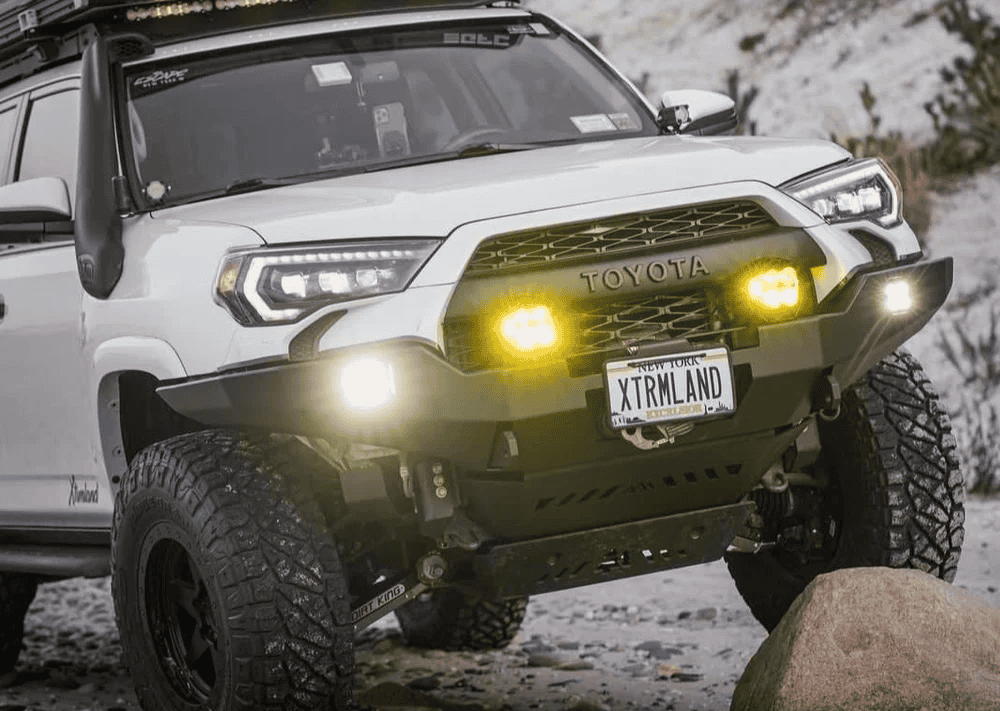Overland Vehicles

In the national park system, true overland routes are legal backcountry roads that keep tires on existing surfaces. These are not cross country tracks. Parks protect fragile soils and habitats, so travel stays on designated roads and camping occurs in approved sites. Many classic routes hug the line between park boundaries and neighboring public lands, where more primitive roads and dispersed sites are available under different rules.
The best experiences come from pairing a park road with nearby national forest or BLM connectors. That mix delivers scenery, solitude, and responsible access. Expect variable surfaces like washboard, embedded rock, deep sand, and shallow water crossings. A stock crossover is rarely the right tool. Plan for high clearance, durable tires, and patience.
Understanding regulations is the first step. Each park sets its own rules for road access, day use quotas, and camping.
Some routes require permits for day travel, overnight use, or specific camps. Canyonlands manages White Rim Road with daily quotas and advance reservations for backcountry sites. Big Bend requires permits for primitive roadside camps on River Road and Old Ore Road. Death Valley allows broad backcountry camping with distance rules from paved roads and facilities, yet certain narrow canyons and flood damaged segments can be temporarily closed. Always confirm details on the park website before you roll.
Weather decides the timeline. Desert monsoon can turn a friendly wash into impassable mud. High country snowpack lingers on shaded benches well into early summer. Wind can stack dunes across the track. Check current conditions pages and recent ranger updates, then build a plan B for the same park in case a gate is closed.
A capable vehicle and thoughtful packing reduce risk while increasing comfort.
Aim for true high clearance with quality all terrain tires and a full size spare. Add front and rear recovery points, a compact kit with strap and soft shackles, traction boards for sand or snow, and a portable air compressor to manage tire pressures. A basic tool roll, fluids, and a method to keep dust out of the cabin make long washboard days easier.
Combine paper maps with an offline app and a preloaded GPX. Carry redundant power and a satellite communicator for emergencies where cell service fades. Plan fuel and water by terrain, temperature, and daily time on route. In desert parks, a gallon per person per day is only the baseline. Engines and drivers both benefit from shade during the hottest hours.
These examples illustrate variety across regions and seasons. Verify current regulations and conditions before travel.
White Rim Road, Canyonlands National Park: A roughly 100 mile benchland loop with big views, steep switchbacks, and a strict permit system. Camps book months ahead, and a day lap is only for well prepared teams.
Titus Canyon Road, Death Valley National Park: A scenic one way corridor that squeezes between towering walls. Conditions change after storms, so high clearance is recommended even when the road is open.
River Road and Old Ore Road, Big Bend National Park: Remote desert tracks with primitive roadside camps. Expect embedded rock, occasional sand, and long distances between services.
Cathedral Valley Loop, Capitol Reef National Park: Clay surfaces and the Fremont River ford make conditions highly variable. After rain, it can be impassable even for experienced drivers.
Geology Tour Road, Joshua Tree National Park: A shorter sandy track with interpretive stops that pairs well with nearby BLM connectors outside the park for a fuller overland loop.
Great Smoky Mountains National Park has limited opportunities for backcountry vehicle travel inside the park. The move is to base in gateway towns, explore scenic gravel across adjacent national forests, and visit the park for hikes and vistas. This pattern is common in many eastern units.
Tread Lightly principles apply everywhere. Stay on the road, avoid wet trail damage, yield to hikers and bikes where permitted, and pack out all trash. Keep camp compact, cook on a stove, and skip the fire when conditions are risky. Your track today influences access tomorrow.
If your list includes White Rim, River Road, or a string of forest connectors around a favorite park, your vehicle should fit the plan. OZK Customs builds overland rigs with the range, storage, and power to handle long dirt days and off grid camps. We tailor suspension, onboard power, lighting, racks, and recovery integration around your routes, not the other way around.
See how we approach capable builds on the Explore Overland Rigs page, dive into options on Custom Overland Upfit, and learn what to expect on Why Choose OZK Customs. Tell us the routes you want to run and we will configure a platform that travels safely, carries smartly, and feels dialed every mile.
Your route list is set. Now match it with a build that can carry you there and back with confidence. Tell us your terrain, season, and crew size, and OZK Customs will design a purpose built overland rig with smart power, storage, suspension, and lighting. Fill out the form to start your custom plan and get a clear timeline and quote.
ADDRESS:
6159 E Huntsville Rd, Fayetteville, AR 72701
PHONE:
(479) 326-9200
EMAIL:
info@ozkvans.com